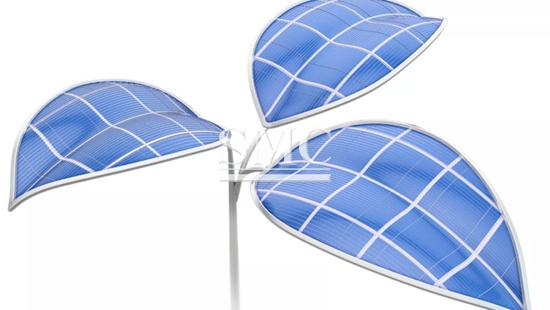Notice: Undefined index: sith_hide_share in /www/sites/alloy.wiki/index/wp-content/themes/likegoogle/single.php on line 32
Deprecated: get_settings is deprecated since version 2.1.0! Use get_option() instead. in /www/sites/alloy.wiki/index/wp-includes/functions.php on line 4862
Artificial Leaves Could Power Your Car
Yes, you read that title correctly. What if I told you artificial leaves could power your vehicle? This new and innovative technology is being called “magical” and a “holy grail” of the twenty-first century. It utilizes and harnesses solar power to produce energy. I know what you are thinking, “Oh, just solar panels, that’s nothing new,” but its much different than solar panels. This technology is being called artificial photosynthesis (AP). In the same way that plants use energy from the sun to make carbohydrates from water and carbon dioxide, researchers developed a way to mimic this process to make energy rich fuels and chemicals. So how does this work?

The Process
Artificial photosynthesis is a process that uses solar energy to split water and carbon dioxide into hydrogen, oxygen, and carbon. This hydrogen can then be used directly as a fuel, or it can be combined with other elements to create other liquid fuels such as methanol. These self producing fuels are extremely attractive to electric vehicle makers because today’s batteries are heavy and bulky when compared to liquid fuel models. Doug MacFarlane, leader of the Energy Program of the ARC Centre of Excellence for Electromaterials Science at Monash said, “Hydrogen can be used to generate electricity directly in fuel cells. . . Cars driven by fuel cell electric engines are becoming available from a number of car manufacturers. Hydrogen could even be used as an inexpensive energy storage technology at the household level to store energy from roof-top solar cells. “This futuristic technology has a huge potential, but it is in its beginning stages there are still some issues and difficulties surrounding the technology.
Challenges
One of the main challenges of artificial photosynthesis is the efficiency. Natural photosynthesis in plants only converts roughly 1 percent of solar energy into the carbohydrates used by plants. While scientists have been able to raise that efficiency rate in lab conditions to about 10 percent, this is still much too low to be considered a viable energy source. Experts at Monash University are pushing this boundary and have been able to produce hydrogen from AP at a record rate of 22 percent. While researchers are working hard to increase AP’s efficiency, vehicle manufacturers are looking for a way to incorporate this technology into their production and line ups. Experts believe it won’t be long before we begin utilizing this technology in our everyday lives.
Shanghai Metal Corporation is a trusted aluminum alloy, aluminum foil price, stainless steel price and stainless steel manufacturer, kinds of stainless steel in china.
Guest contributors are welcome at the Alloy Wiki.It is a weekly wiki and guide on alloy information and processing technology, while also about the vast array of opportunities that are present in manufacturing. Our team of writers consists of a Machining Material Supplier / Machinist / Tool and Die Maker, a Biomedical Engineer / Product Development Engineer, a Job Development Coordinator / Adjunct Professor, and a President and CEO of a manufacturing facility.
Link to this article:Artificial Leaves Could Power Your Car
Reprint Statement: If there are no special instructions, all articles on this site are original. Please indicate the source for reprinting:Alloy Wiki,thanks!^^


